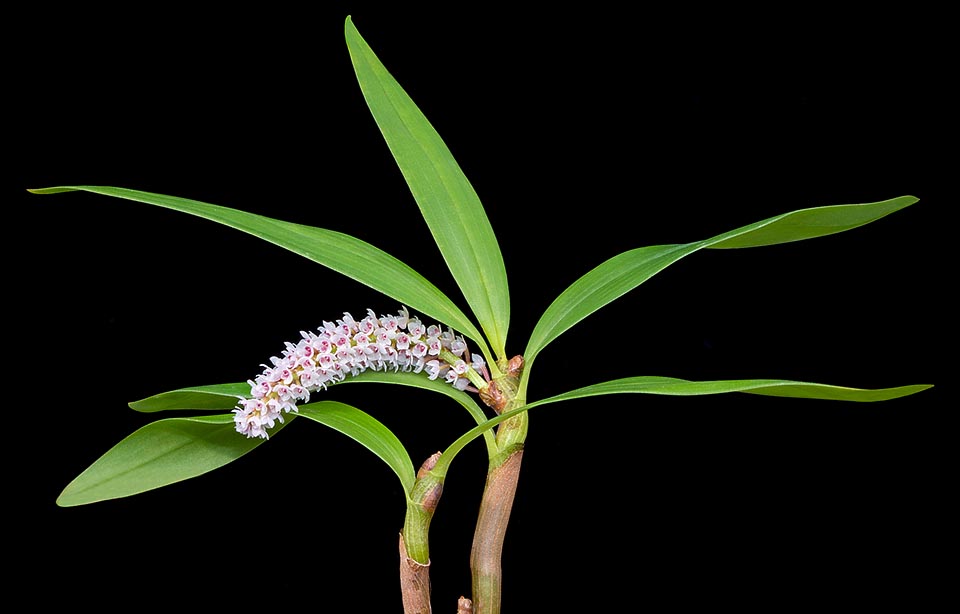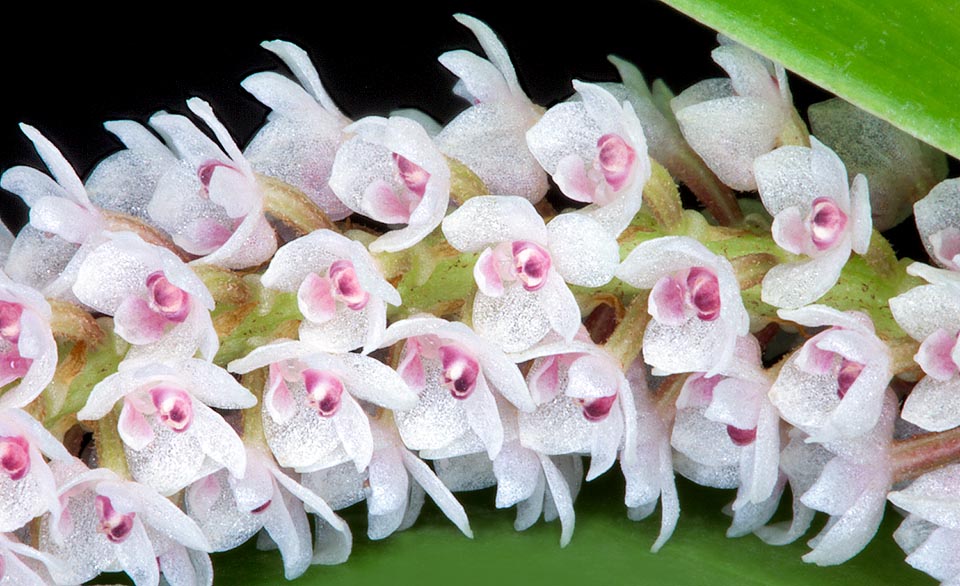Family : Orchidaceae

Text © Pietro Puccio

English translation by Mario Beltramini
The species is native to Bali, Java and Sumatra where it grows on the trees of the humid forests between the 800 and the 2200 m of altitude.
The Pinalia multiflora (Blume) Kuntze (1891) is an epiphytic species that forms dense tufts with creeping rhizome and pseudobulbs, spaced of about 1 cm, clavate-cylindrical, slightly compressed laterally, 15-32 cm tall and of 0,7-0,8 cm of diameter.
The pseudobulbs are provided along the upper part of
linear-lanceolate leave with acute to obtuse apex, 10-22 cm long and 1,5-2,6 cm broad.

Pinalia multiflora is an epiphyte with dense tufts of Bali, Java and Sumatra. 15-32 cm pseudobulbs with 2-7 linear-lanceolate leaves © Giuseppe Mazza
It reproduces by seed, in vitro, and by division, with each section provided of at least 3-4 pseudobulbs, upon the vegetative restart.
Floriferous species that produces several inflorescences on each pseudobulb that compensate the fairly short life and the tiny size of the single flowers. It requires a partial shade, intermediate temperatures, 18-32 °C, with lowest winter values not under the 15 °C, constantly high humidity, 70-85 %, and a well aerated location. Regular and abundant waterings, allowing the substratum to partially dry up before giving water again, utilizing rain water, demineralized or by reverse osmosis.

The inflorescences are compact, 10-15 cm spikes, bearing a crowd of tiny fragrant fllowers of about 0,5 cm of diameter © Giuseppe Mazza
The species is reported in the appendix II of the CITES (species whose trade is internationally ruled).
Synonyms: Dendrolirium micranthum Blume (1825); Dendrolirium multiflorum Blume (1825); Octomeria racemosa Breda (1829); Eria micrantha (Blume) Lindl. (1830); Eria multiflora (Blume) Lindl. (1830); Pinalia micrantha (Blume) Kuntze (1891); Urostachya multiflora (Blume) Rauschert (1983).
→ For general notions about ORCHIDACEAE please click here.
